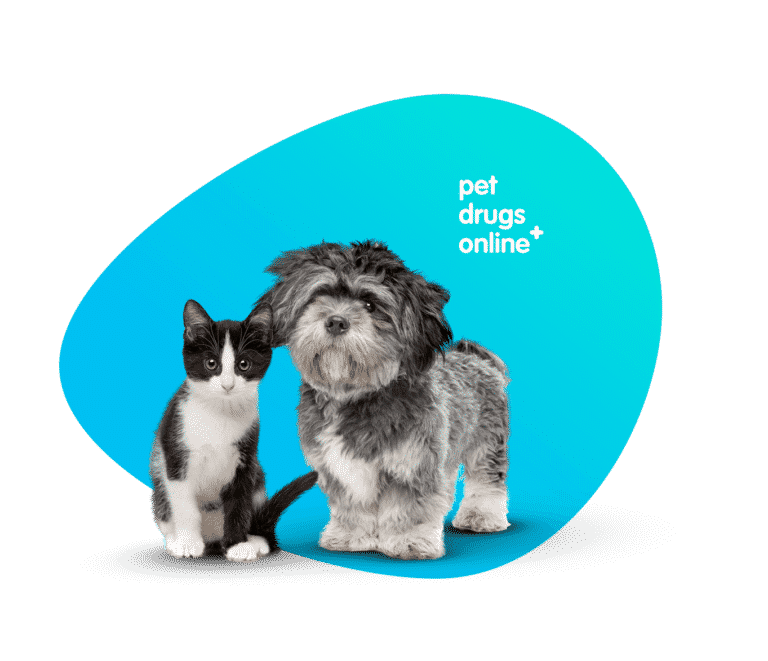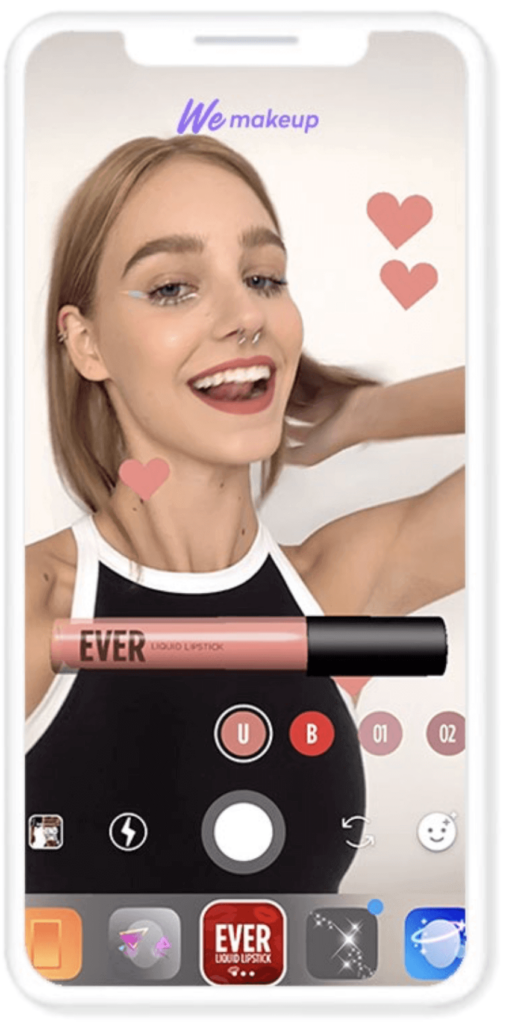While these are challenging times, right now is the start of a new era for eCommerce advertising. By necessity, the face of retail will be changed forever.
For example, we’re seeing search activity from consumers which includes the phrase “buy online” almost quadrupled in 2020. We can expect consumer shopping behaviors to be influenced in the longer term by what happens now. This is the time to get our houses in order and ensure we are ready to capture the opportunities that will continue to present themselves through eCommerce.
Here, we highlight the 10 best practices from across the globe, which are delivering demonstrable improvement in return on ad spend (ROAS) for eCommerce advertisers.
Our favorite measure for marketing efficiency here at Optily is ROAS. ROAS is how much eCommerce revenue is attributed to that activity per $1 spent.
What benchmark should you have in mind for ROAS? While each category is unique, in our experience eCommerce companies typically set expectations of a minimum of 5x ROAS. This means that for every $1 spent on advertising at least $5 of incremental revenue can be attributed back.
#1 Dynamic funnel marketing
When measuring eCommerce advertising effectiveness based on ROAS, advertising spend is generally most inefficient at the top of the funnel. Notwithstanding, generating eyeballs across any platform today has never been more cost-effective. However, potentially 90%+ of those impressions are wasted on people who will never purchase from you. It is clear that marketers want to prioritize downstream funnel activity as much as possible.
That being said, marketers today fully appreciate that a lack of investment in higher funnel engagement stunts growth. As with most things, you need to strike a balance and develop a full-funnel marketing strategy.
-
Israeli skincare brand FRÉ, tackled this problem within the Facebook ecosystem. They effectively structured campaign creatives and remarketing in line with their customers’ purchase journeys. Within one month, they were able to achieve a 22% lower cost per sale.
-
Pet Drugs Online, the UK leader in pet medication online, employed dynamic funnel optimization on Facebook & Instagram. This helped them to prioritize ads and audiences with the highest propensities to convert. Ultimately, when these audiences were saturated, optimization dynamically shifted emphasis further up the funnel, delivering 10x improvement in conversion rate and 56% lower acquisition costs

Interested in learning more about funnel strategies for eCommerce advertising? Claim your free copy of my book, Accelerate eCommerce Growth: A Proven Framework to Scaling Your eCommerce Business with Digital Advertising.
#2 Cross-channel ad optimization
Purchase journeys are as unique and complex as each individual. Purchase decisions around products as diverse as beauty and personal electronics can involve hundreds of touchpoints. Armed with this information, eCommerce marketers must actively engage with shoppers via as many relevant touchpoints as possible. With limited resources, it is crucial to optimize investment towards the touchpoints that deliver the highest returns.
The ad platforms enable marketers to analyze and optimize ad spend within their ecosystems. However, there are significant efficiencies to be achieved by eliminating the waste that occurs between platforms. Transitioning from simplistic rules-based attribution models to data-driven attribution models, which enable you to dynamically assess the relative impact of each channel, is vital.
The UK’s largest charitable social enterprise, Better, achieved significant improvements in inefficiency. They optimized the ad spend on Facebook & Instagram based on cross-channel advertising performance data. Within just a couple of weeks, they were able to achieve 2.8x more conversions from Facebook with the same ad spend.
Looking to test out automated ad spend optimization tech for your own eCommerce store? Try Optily free for 14 days through the Shopify app store and supercharge your eCommerce advertising results!
#3 First-party shopper data
Ad platforms are pretty awesome at unearthing in-market audiences. However, no one knows your customers better than you do. By using custom audiences and lookalike tools within the platforms, you can leverage your own insights. These data will help you pinpoint your best-performing segments with the power of the platforms to efficiently scale your advertising.
-
Jubly-Umph, an Australian eCommerce business that sells art and jewelry wanted to find people in the US who were interested in its niche product. The brand split-tested Facebook’s Interest Targeting against International Lookalike Targeting to determine the most efficient US market-entry strategy based on existing customer profiles. The lookalikes achieved a 3.1x higher ROAS than the interest targeting approach.
-
US insurer, Allstate realized that 70% of their existing customers were researching new financial products online. The insurer used Customer Match in Google to personalize ad messages to existing customers and generated sales at 1⁄4 of the cost of acquiring new customers.
-
eCommerce brand MeUndies leveraged Snapchat pixel data to target customers who had previously purchased or who had shown high purchase intent. This approach yielded a 66% ROAS improvement.
#4 Personalized creative
90% of consumers say that messages from companies that are not personally relevant to them are “annoying.” 80% are more likely to make a purchase where brands provide a personalized experience. Thankfully, the ad platforms are making the challenge of personalization much easier with dynamic creative formats.
-
UK fashion retailer, JD Williams, used Facebook’s Dynamic Ads, tasking the Facebook algorithms with delivering the optimum creative format into the placements where individuals were more likely to engage. This helped JDW achieve a 21% lift in incremental conversions. Dorothy Perkins similarly layered dynamic ads with pixel-driven targeting to achieve 8x incremental ROAS.
-
Singapore travel insurer NTUC Income leveraged YouTube’s Director Mix toolkit. This helped to automate the creation of 500 variants of 6-second bumper ads with different characters suffering accidents in different locations. As a result, they saw a 50% increase in key metrics such as branded search and brand recall.
-
The UK’s Topps Tiles leveraged Responsive Search Ads from Google with just eight headlines and four descriptions, which enabled them to reduce their CPAs by 29% within just one month.
#5 Catalog shopping ads
Most ad platforms now facilitate catalog shopping ads. They enable your live online or local store inventory to be matched with customers who are in-market for those products. Additionally, platform algorithms establish customer intent based on search activity, pixel data from your website, and a range of other proprietary analyses. These ad formats consistently deliver among the highest ROAS.
In Google Shopping, Amazon accounts for upwards of 40% of impressions which alone is a testament to Google’s dominance here.
-
Tiffany & Co had a challenge with search interest. As a result, they doubled down on improving the categorization and organization of their product feed for Google to achieve an impressive 29% increase in ROAS.
-
European shoe brand, Espadrij l’originale combined Facebook Dynamic Product Ads with sale deals to effectively remarket to shoppers and achieve a 4.8x improved ROAS via Facebook & Instagram.
-
DIY store B&Q implemented Pinterest Shopping Ads and achieved a 7x improvement in ROAS from this format.
-
eCommerce player Wish, achieved an 80% decrease in their key Cost Per Install metric by integrating their product catalog into Snapchat Story Ads.
#6 Shoppable video & posts
Digital marketers have always understood the power of visual storytelling to help differentiate in the online world. Shoppable video and post features take storytelling to the next level, allowing consumers to easily click to purchase featured products.
- Belgian online department store ColliShop used a solution from Spott.ai to include interactive product information on top of video ads. As a result, they delivered a 20% increase in orders and 19% uplift in AOV.
- Within Instagram, eCommerce brands can add product stickers to Story Ads. This allows audiences to view product information, such as price, and then click-to-purchase. Barbour achieved a 42% increase in sales from Instagram using this feature in its ads.
- German streetwear brand DefShop achieved 64% increase in sales and 13% higher conversion rate with the same tactic on Instagram.
- Amazon includes brand-sponsored product video ads in search results. According to pet supply business Rocco & Roxie, this format now provides the highest ROI of any of their campaigns.
#7 Augmented reality ads
Each day more than one-third of all UK digital audiences interact with augmented reality (AR) in just one social app – Snapchat. When it comes to younger audiences, that number rises to 78%. 31% of UK and US young shoppers are enjoying using AR in their purchase decision-making.
Most ad platforms are now offering AR toolkits to make it easy to get started. But does it work well for eCommerce advertising?
-
Ralph Lauren worked with Snapchat combining AR Lenses and Snap Ads to provide users a gamified way to experience the brand’s products. This yielded a 19% attributable lift in sales.
-
Saudi youth clothing brand Nisnass also took advantage of Snapchat’s AR ad capabilities to deliver a 40% lift in profitability in ROI
-
Italian make-up brand We Make-up used Facebook Augmented Reality Ads to try on different shades of liquid lipstick through a face filter. These ads delivered a direct performance hit with a 28-point lift in purchases during the first month.
-
In early 2020, fashion brand Burberry partnered with Google to incorporate an AR experience directly within mobile search results. There’s no performance data yet on this but we’re sure to see much more on this as Google doubles down on AR.

#8 Conversational eCommerce advertising
- The ability to interact at any time
- The speedier resolution of queries
- Their comfort using such tools for all types of communications
-
Indian eCommerce giant Flipkart uses ads within Facebook that click to WhatsApp. Then a chatbot-powered digital assistant to engage with customers. This approach resulted in 3.5x more conversions on the back of 20,000 hours of engagement.
-
Taiwan jewelry brand Vacanza used Messenger calls to action within the Facebook photo and video ads. This enabled shoppers to learn more about products and make purchases without leaving the chat. These bot-driven engagements achieved 7.4x higher basket values.
-
Manulife, a Vietnamese insurance company discovered that introducing click-to-chat within Facebook ads helped to improve the quality of leads. Due to shoppers being able to have questions answered in advance. The brand achieved 2.4x more qualified leads while reducing the cost-per-lead by 28%.
Optily Radio guest, Mia Bobak of Gorgias, commented on the immense value SMS has for eCommerce advertising by starting a conversation with a customer.
#9 Marketplace eCommerce advertising
Marketplaces provide the convenience of enabling shoppers to shop from a wide range of vendors in one location. Whether you are listing your products on these marketplaces or not, they increasingly provide advertising opportunities that enable you to address consumers deep in the purchase journey.
49% of online product searches now start directly within Amazon. Amazon is committed to advertising with sponsored product listings, brand listings, and video and display ads scattered through search results and product listings.
We identify 14 pay-to-play opportunities alone on a typical product listing page. Amazon provides advertising solutions that direct consumers to your brand or product listing on Amazon itself or to your eCommerce website.
-
Tablet brand Wacom leveraged Amazon’s Demand Side Platform (DSP) to advertise to in-market both on and off Amazon. From this display marketing activity, they achieved ROAS of up to 7x.
-
Facebook isn’t long in the marketplace game but is already delivering strong results through marketplace listings and ad placements. eCommerce subscription company, BarkBox, achieved a 16% higher CVR and an 8% lower CPA through Marketplace Ads.
#10 Affiliated influencers
Influencers drive sales. In fact, 49% of consumers rely on recommendations from influencers in purchase decisions. Influencers have been shown to be more than double the consumer purchase intent when combined with brand messaging. Using affiliate solutions is an easy way to harness the power of influencers with ROI baked in.
Affiliate marketing platforms such as AWIN, CJ Affiliate, and NicheVendor make it easy for eCommerce brands to showcase their products on YouTube, Instagram & TikTok influencers, and bloggers on a CPA (Cost Per Acquisition) basis. This approach ensures that the retailer remains in full control of the ROAS.
-
French retailer, La Redoute, used affiliate solutions for quite some time. But they wanted to reduce the dependency on voucher/coupon platforms. Working within AWIN, they shifted emphasis towards content-based affiliates to achieve 36% increase in ROAS and 61% additional revenue.
-
US retailer Macy’s, partnered with TVPage, to include shoppable affiliate overlays on videos created by influencers and superfans. In the midst of the Covid-19 pandemic, eCommerce brands experienced sales revenue growth by 300% through influencer video commerce.
Optily is the only single-click ad spend optimizer for eCommerce. Our plug-and-play online platform quickly links all of your Google and Facebook ads together and helps you easily determine which campaigns are working. With just one click, you can apply our optimization recommendations–like moving budget from a lower performing Google ad to a better performing one on Instagram.
Optily saves you time and money by instantly optimizing your ad spend.







